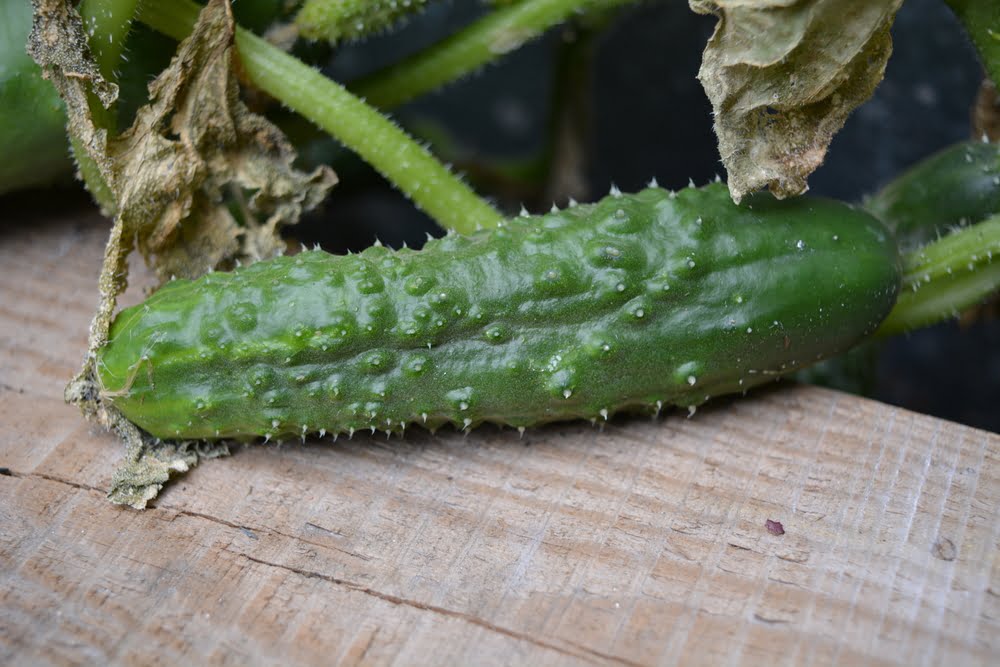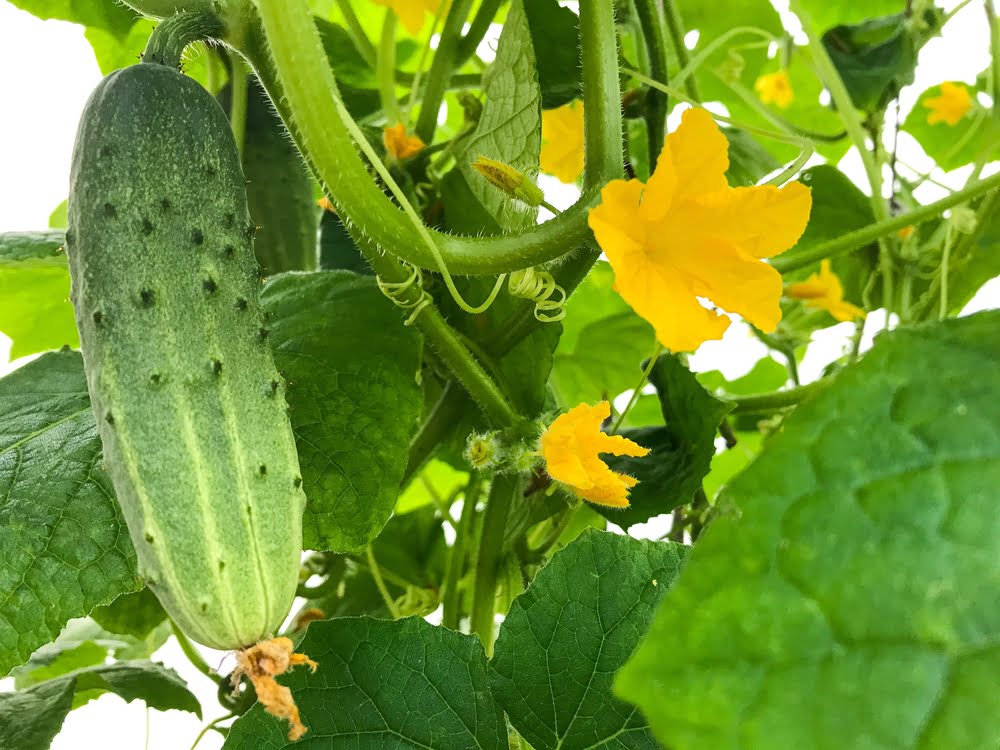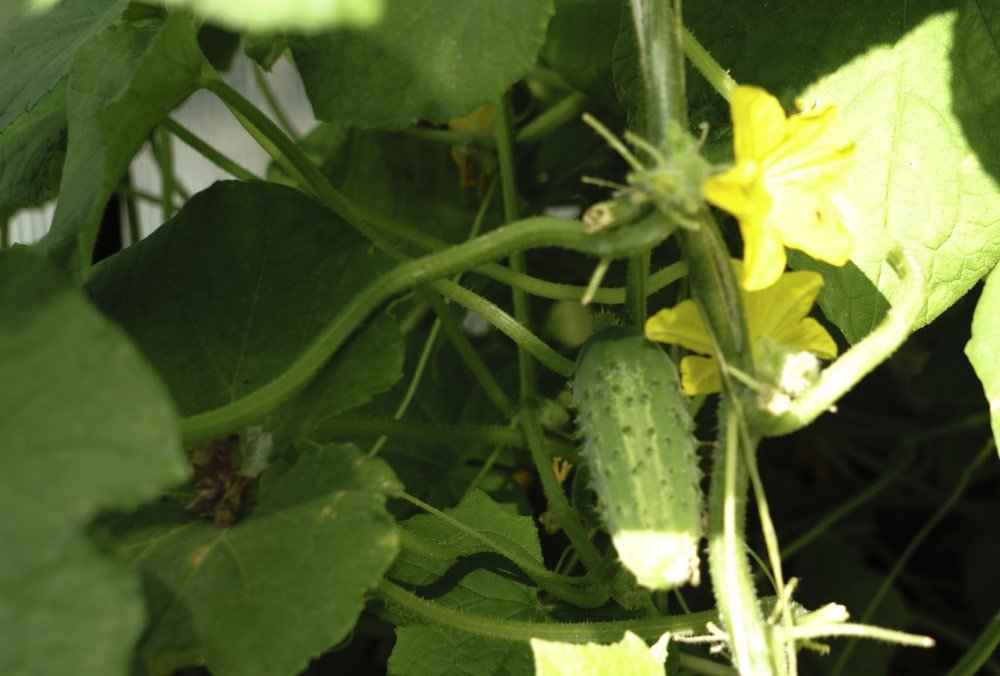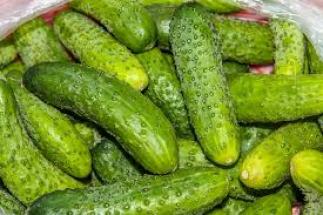Ever wondered why the cucumbers you grow in your backyard sometimes turn out unusually spiky? It can be quite perplexing, especially when you’re expecting smooth and sleek cucumbers ready for salads and sandwiches. But fear not, there’s a simple explanation behind those prickly protrusions. In this article, we’ll uncover the reasons why your cucumbers may develop spikes and offer some tips to help you grow deliciously smooth ones instead. So, if you’re eager to unravel the mystery of spiky cucumbers, keep reading.

The Anatomy of a Cucumber
Cucumbers are a popular and versatile vegetable that can be enjoyed in salads, sandwiches, and even pickled. However, sometimes cucumbers can develop spikes or prickles on their skin, which can make them less appealing to eat. Understanding the causes of spiky cucumbers and how to prevent or address this issue is essential for any cucumber enthusiast.
Outer Skin
The outer skin of a cucumber is the protective layer that encases the flesh and seed cavity inside. In normal cucumbers, the skin is smooth and free from any spikes or prickles. However, in some cases, the skin can develop tiny spikes or prickles, which are often more noticeable in certain cucumber varieties. The texture and appearance of these spikes can vary, and in some instances, they may be more prominent or noticeable.
Flesh and Seed Cavity
The flesh of a cucumber is the part that is typically consumed, as it offers a refreshing and crisp texture. The seed cavity is located in the center of the cucumber and houses the seeds. Ideally, both the flesh and seed cavity should be smooth and free from any spikes or irregularities. When cucumbers develop spikes, these tend to be more concentrated on the outer skin rather than permeating the flesh or seed cavity.
Factors Contributing to Spiky Cucumbers
There are several factors that contribute to the development of spikes on cucumbers. These factors can be categorized into three main groups: varietal characteristics, environmental factors, and genetic mutations. Understanding these factors can help you identify the cause of spiky cucumbers and take appropriate actions to address the issue.
Varietal Characteristics
Different cucumber varieties have unique characteristics, including variations in skin texture. Some varieties are more prone to developing spikes or prickles naturally, even under optimal growing conditions. Let’s take a closer look at a few cucumber varieties known for their spiky nature.
Bitter Melon Cucumber
The bitter melon cucumber, also known as the African horned cucumber, is an example of a cucumber variety with naturally spiky skin. The spikes on this cucumber are more pronounced and prominent, adding to its unique appearance. Despite the name, this cucumber is not excessively bitter and can be enjoyed in various culinary preparations.
Kiwi Cucumber
The kiwi cucumber, also known as the cucamelon or Mexican sour gherkin, is another variety that tends to have spiky skin. These small cucumbers resemble miniature watermelons, complete with spikes on their skin. Their tangy flavor makes them a popular choice for pickling or using as a garnish.
Lemon Cucumber
Lemon cucumbers, as the name suggests, resemble small, round lemons. While they may not be as spiky as other varieties, they can develop fine, thin spikes on their skin. Lemon cucumbers have a mild and slightly sweet flavor, making them a refreshing addition to salads and sandwiches.
Malekhu Cucumber
The Malekhu cucumber, a popular variety hailing from Nepal, is known for its bumpy skin. While not as spiky as some other varieties, the bumpy texture can create the illusion of spikes. This cucumber is typically consumed when young and has a crisp and subtly sweet taste.
Environmental Factors
Environmental factors can play a significant role in the development of spiky cucumbers. Suboptimal conditions can cause cucumbers to stress or respond in ways that result in the formation of spikes. Here are some common environmental factors that can contribute to spiky cucumbers.
Inadequate Water Supply
Cucumbers require consistent and adequate moisture to grow and develop properly. If a cucumber plant doesn’t receive enough water, it may respond by developing spikes on its skin. To prevent this, ensure that your cucumber plants receive regular watering, keeping the soil evenly moist but not waterlogged.
Inconsistent Temperatures
Fluctuations in temperatures can also affect cucumber development and lead to the formation of spikes. Cucumbers prefer temperatures between 70 to 85 degrees Fahrenheit (21 to 29 degrees Celsius). When exposed to significant temperature variations, particularly during the fruiting stage, cucumbers may exhibit irregular skin texture.
Inadequate Pollination
Proper pollination is essential for cucumbers to develop normally. When pollination is inadequate, it can result in distorted growth or irregularities in fruit development, including spikes on the skin. Encouraging pollinators, such as bees, to visit your cucumber plants can help ensure proper pollination.
Excessive Sunlight Exposure
While cucumbers require sunlight for photosynthesis, excessive exposure to sunlight can cause them to become stressed and develop spikes. Providing some shade or using shade cloth during the hottest parts of the day can help protect cucumber plants from excessive sunlight and minimize the risk of spiky cucumbers.
Genetic Mutations
Genetic mutations can occur naturally and contribute to the development of spiky cucumbers. While less common than varietal characteristics or environmental factors, genetic mutations can still occur and result in the formation of spikes. Let’s explore the different types of genetic mutations known to affect cucumber plants.
Spontaneous Mutation
Spontaneous mutations can happen randomly and lead to unexpected changes in the characteristics of cucumber plants. These mutations can sometimes result in the appearance of spikes on the skin. The exact cause of spontaneous mutations is not always clear, but they can be influenced by various genetic or environmental factors.
Mutation Due to Cross-Pollination
Cross-pollination between different cucumber varieties or even other related plant species can result in genetic mutations. When a cucumber plant receives pollen from a different variety or species, it can lead to altered characteristics, including skin texture. If you are growing multiple cucumber varieties, it’s important to prevent cross-pollination by isolating them or spacing them adequately.
Genetic Engineering
Genetic engineering refers to the intentional modification of an organism’s DNA to introduce specific traits or characteristics. While less commonly used in cucumber breeding, genetic engineering techniques can theoretically be employed to create cucumber varieties with spiky skins. However, it’s important to note that commercially available cucumbers are typically not genetically engineered in this manner.

The Role of Pollination
Proper pollination is crucial for cucumber plants and can affect fruit quality, including the development of spiky cucumbers. Understanding the difference between female and male flowers and the importance of adequate pollination is key to addressing the issue of spiky cucumbers.
Difference Between Female and Male Flowers
Cucumber plants produce both male and female flowers. Male flowers typically appear first and can be recognized by their long, slender stems and lack of a tiny cucumber fruit at the base. Female flowers, on the other hand, have a small cucumber-like structure at the base, which will eventually develop into the fruit. These female flowers must be properly pollinated to ensure the development of healthy and smooth cucumbers.
Importance of Proper Pollination
Pollination is the process of transferring pollen from the male flower to the stigma of the female flower. This transfer of pollen enables fertilization and the subsequent development of cucumbers. Proper pollination ensures that the fruits develop evenly, with smooth skin and regular shape. Inadequate pollination, whether due to a lack of pollinators or other factors, can result in the formation of spiky or misshapen cucumbers.
Common Issues and Solutions
Addressing common issues related to spiky cucumbers can help ensure a more successful cucumber harvest. By understanding these issues and implementing appropriate solutions, you can increase the likelihood of obtaining smooth and delicious cucumbers.
Overwatering
While consistent moisture is essential for cucumber plants, overwatering can lead to waterlogged soil and increased stress on the plants. This stress can result in the formation of spikes on the skin. To prevent overwatering, ensure that the soil is well-drained and water your cucumber plants only when the top inch of soil feels dry to the touch.
Providing Adequate Shade
Excessive sunlight exposure can cause cucumber plants to become stressed and develop spikes. Providing some shade during the hottest parts of the day can help protect the plants and minimize the risk of spiky cucumbers. Using shade cloth or planting cucumbers in a location with partial shade can be effective strategies to provide the necessary shade.
Hand-Pollination
If you notice a lack of pollinators or suspect inadequate pollination, you can resort to hand-pollination. This process involves manually transferring pollen from male flowers to female flowers using a small brush or cotton swab. Gently brush the tip of the male flower to collect pollen, and then transfer it to the stigma of the female flower. Hand-pollination can help ensure more reliable and adequate pollination, reducing the chances of spiky cucumbers.
Choosing the Right Varieties
If you consistently face the issue of spiky cucumbers, choosing cucumber varieties known for their smooth skin can be a solution. Opting for varieties with minimal or no spikes can help alleviate the problem. Research different varieties and select those that are specifically known for their smooth skin, ensuring a more enjoyable cucumber harvest.

Harvesting and Storage
Proper harvesting and storage techniques are essential to maintain the quality of cucumbers and prevent the development of further spikes.
Picking Time
Cucumbers should be harvested at the right time to ensure optimal flavor and texture. For slicer cucumbers, harvest when they reach 6 to 8 inches in length. Pickling cucumbers, on the other hand, are typically harvested when they are 2 to 4 inches long. Harvesting at the correct size helps minimize the risk of cucumbers becoming excessively mature, which can contribute to the development of spiky skin.
Proper Storage
After harvesting, cucumbers should be properly stored to retain their freshness and quality. Place them in a plastic bag or wrap them in a damp paper towel to help maintain moisture. Store them in the refrigerator, where they can stay fresh for up to a week. Avoid storing cucumbers alongside fruits that release ethylene gas, as this can accelerate their ripening process and potentially lead to the development of spiky skin.
Cooking with Spiky Cucumbers
If you find yourself with spiky cucumbers, there are ways to still enjoy their delicious flavor and incorporate them into your culinary creations.
Removing the Spikes
Before using spiky cucumbers in your recipes, it’s a good idea to remove the spikes to make them more palatable. You can do this by gently scrubbing the skin under running water or peeling off the skin entirely, depending on the severity of the spikes. Once the spikes are removed, you can proceed to slice or dice the cucumber as desired.
Creative Recipes
Spiky cucumbers can still be used in a wide range of recipes, from refreshing salads to flavorful sandwiches. Try making a cucumber and tomato salad with a light vinaigrette dressing or adding sliced cucumbers to your favorite wrap or burger. Additionally, you can pickle spiky cucumbers for a tangy and crisp side dish. Get creative in the kitchen and experiment with different flavor combinations to make the most of your spiky cucumber harvest.

Conclusion
Understanding the causes of spiky cucumbers and taking appropriate actions are essential for any cucumber enthusiast. Whether it’s due to varietal characteristics, environmental factors, or genetic mutations, the occurrence of spiky cucumbers can be mitigated with the right knowledge and strategies. By selecting the right cucumber varieties, addressing environmental factors, ensuring proper pollination, and implementing appropriate solutions, you can enjoy a bountiful harvest of smooth and delicious cucumbers. Remember to harvest and store cucumbers correctly, and don’t be discouraged if you encounter the occasional spiky cucumber. With a little culinary creativity, you can still enjoy the unique flavor and versatility of these cucumbers in various dishes.



